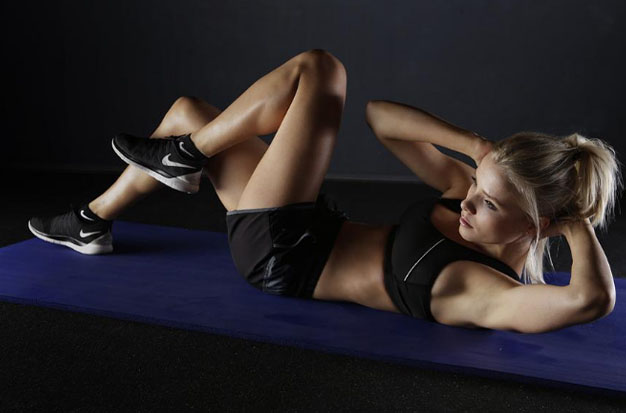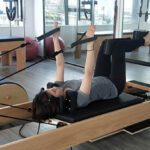How to Relax During Sports – Simple Sport Psychology Techniques

Sports professionals are becoming more aware of the link between the mind and body in recent years. Numerous studies point to the strong connection between the two. So, for athletes of all levels, learning strategies for relaxation in sports has become a crucial component of training for athletic success.
Additionally, the advantages of relaxation go far beyond health. Sports performance has been demonstrated to benefit by the simple act of pausing to breathe, unwind, and concentrate, even for a short while.
Thus, learning how to relax while exercising is a very helpful ability for sportsmen to acquire. It is a component of one’s ability to self-regulate and manage a range of harmful emotions.
Check Stress Levels
Stress is a natural byproduct of competition. It can be advantageous to experience some stress because it helps the body overcome a hardship. However, excessive tension can ruin the enjoyment of a sport and make it challenging to perform. Athletes may experience stress from factors other than competition, such as:
- Too much pressure from parents or coaches to win
- Having too much on the schedule
- Not wanting to play the sport
Speak to your parents and coach if you believe there may be too much stress associated with competing. Making some changes can help, such as:
- Switch your attention from winning to giving your best effort and maintaining a positive attitude.
- See what’s on your schedule. Limiting practice time or only participating in one sport or activity per season are both options to consider if you have too many commitments.
- If you decide you no longer want to participate in the sport, discuss your feelings with your parents and come to a decision together.
Types of Relaxation Strategies
The literature on sports psychology (SP) has recommended a variety of relaxation techniques that can be divided into two categories: physical relaxation techniques and mental relaxation techniques. The athlete’s claimed symptoms have frequently been used as justification for using either type of method. Researchers have advocated for matching the therapy (i.e., relaxation type) to the athlete’s predominant set of symptoms in particular. This method of treatment, which primarily treats somatic anxiety symptoms with a type of physical relaxation and cognitive anxiety symptoms with a kind of mental relaxation, was coined by Ian Maynard and colleagues as the “matching hypothesis.” The concept can also be used to describe the manifestation and effects of other emotions, such as fury and exhilaration.
Physical Relaxation Strategies
Muscular tension can be reduced and coordination can be improved during the performance by using physical relaxation techniques. Examples of such strategies taught by sports psychologists include breathing exercises, progressive muscular relaxation (PMR), and biofeedback (BFB).
Breathing Exercises
Correct breathing is a simple relaxation technique that has numerous benefits, including raising mood, reducing muscle tension, and increasing blood oxygen levels. Diaphragmatic breathing, in which the performer is instructed to breathe into the abdomen and subsequently the chest, is a necessary part of breathing correctly. By first pushing the diaphragm down and the abdomen outward, extending the chest, and lifting the chest and shoulders, the performer should pay special attention to filling the lungs when inhaling deeply.
Athletes can be encouraged to be rhythmic in their breathing by inhaling, holding, and expelling to a count of a predetermined number in order to foster this breathing in a controlled manner such that it is beneficial during competitive performances. Another way is to make the exhalation noticeable (for example, by utilizing loudspeakers). g., with a “cheers” sound) may improve performance by relieving tension in the muscles during crucial motions like throwing the javelin or striking the tennis ball. The benefits of breathing exercises have been supported by some findings provided by Adam Nicholls and colleagues in SP research.
Progressive Muscle Relaxation
Get comfortable and remove all of your clothing. Spend a few minutes taking long, deep breaths in and out. After finishing, turn your attention to your right foot and pay attention to how it feels. After that, slowly tense and squeeze the muscles in your right foot as tightly as you can while counting from one to ten. Focus on letting the tension leave your foot while also noticing how limp and at ease it feels. Playing your favorite games on websites like Comeon India, which offers a variety of intriguing betting options, is a great way to unwind if you’d prefer that method.

Visualization
This part of traditional medicine involves visualizing a peaceful scene in which you can let go of all your stress and anxiety. Choose a setting that best represents who you are, and then picture yourself there.
By using listening tools like a sound machine, relaxing music, or a recording that fits your environment, you can concentrate and visualize things more clearly. The visualization functions best when you include as many sensory details as you can. Close your eyes and focus on a peaceful scene or environment that you adore to find some inner peace.
Remember that you must consistently practice these skills every day for five to ten minutes for them to be effective. In order to perform at your best, a sports fan and player must consistently practice learning to unwind. You can become focused, well-rested, and at the top of your game with the right relaxation technique.
Befriend Anxiety
Even though you might not be able to control your stressors, you can always decide how to react. Self-doubt and anxiety are common. They are your body’s way of letting you know that it is awake, energised, and prepared to work. You can start managing stress once you understand how it affects your body and mind. Discover your stress response to begin with. What do you hear in your head? What emotions are you feeling? What sets you off? Thoughts, feelings, and sensations that surface in response to stress can be observed with the aid of mindfulness without becoming consumed by them.
Focus on What You Can Control
If you start to worry about things like who is watching you or that the other competitors are better than you, remind yourself that these are components of the competition that are out of your control.
You have complete control over how well you perform, how well you prepare, and how effectively you employ techniques and strategies like progressive muscle relaxation and imagery.
Unfortunately, using self-help methods does not reduce this worry. It is true that occasionally the effectiveness of these strategies might be increased by simply seeing a therapist. This is because the therapist has faith in your capacity to recover and because you have someone to account to for the work you do and the advancement you achieve.
*Find More Muscle Relaxation Methods Here!
- How to Relax Your Tight Sphincter Muscle with Useful Tips
- How Often Should I Relax My Hair & How to Relax Hair
- How to Have a Relaxing Weekend – Enjoy Yourself
- How Long Do Muscle Relaxers Stay in Your System
- Do Muscle Relaxers Cause Weight Gain – Muscle Relaxers Side Effects
- Why Does My Fat Itch When I Exercise – Common Causes
- How to Reduce Your Tongue Tension – Simple Exercises
- How to Relax Your Facial Muscles in Easy Ways
- How to Relax Chest Muscles After Breast Augmentation?
- Can a Chiropractor Prescribe Muscle Relaxers?
- Why Is My Waist Turning Bigger With Exercise?
- How Does Visualization Promote Relaxation and Stress Reduction?
- 5 Reasons Entrepreneurs Are Uncomfortable During Vacations
- How Might Regular Cardiorespiratory Exercise Affect Hypertension?
- How to Relax Throat Muscles Anxiety?
- How to Relax Your Jaw – The Best Ways to Relax Your Jaw









